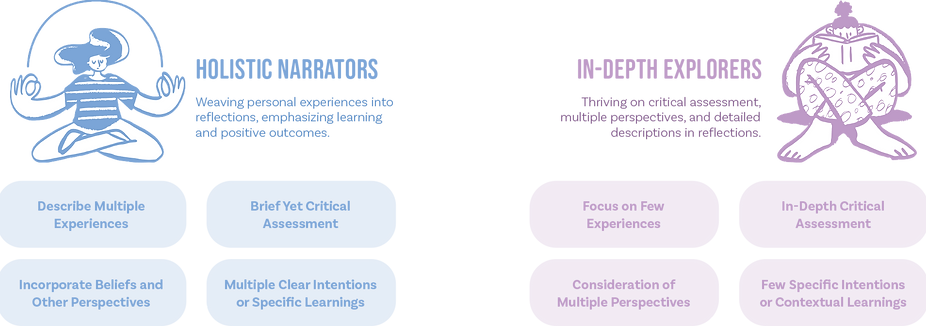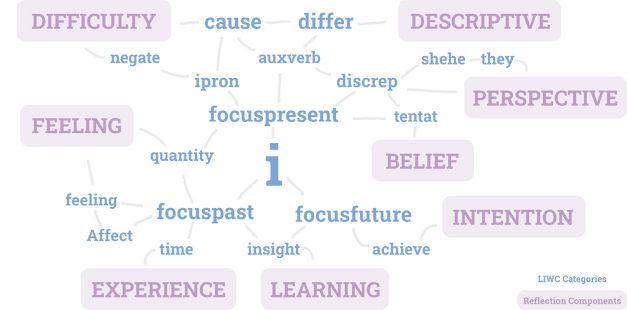Reflective Practice
Mar 2023 - Aug 2023
The Language of Reflection
A Linguistic Exploration of Reflection Written by Design Students
Understanding the language of designer’s reflections is imperative due to its pivotal role in shaping the growth and competence of designers. Reflective writing is a cornerstone for designers’ development, enabling them to dissect experiences, enhance learning, and foster professional evolution. However, conventional assessment methods fall short in objectivity and reliability. By delving into the linguistic fabric of reflections, this research not only unveils the intricate tapestry of reflective practices but also paves the way for targeted interventions and automated tools, equipping educators to cultivate critical thinking, diverse perspectives, and refined introspection. In a field where communication is key, deciphering the language of designer’s reflections becomes not just valuable, but transformative.
Research Question
How can linguistic analysis contribute to a comprehensive understanding of design students’ reflective practices and facilitate the identification of high-quality reflections?
Research Goals
01
02
03
To understand the components and dimensions of reflection within the design students’ final reflections in the DTM course.
To explore the linguistic elements and patterns present in the reflections using LIWC.
To identify the characteristics of high-quality reflections and determine the linguistic categories associated with such reflections.
This research analysed reflections of 56 design students, as part of graded coursework, using content and dictionary-based approaches (LIWC). Building on an existing model of reflection with eight components – experience, belief, difficulty, perspective, feeling, learning, intention, and descriptive – we identify, using descriptive statistics, the linguistic features associated with each component and correlate these to grades achieved. We distinguish two types of reflections associated with higher grades: those emphasizing personal experiences that we term holistic narrators, and those that focus on critical self-evaluation that we term in-depth explorers.
Nature of Quality Reflections
Diverse ways in which individuals engage in reflective writing

Shared Linguistic Features Of Reflection Components
The exploration of LIWC categories in relation to reflection components uncovers a nuanced symphony of language. The intricate relationship between LIWC categories and reflection components offers a nuanced lens through which to assess the quality of reflections. While LIWC analysis provides a valuable cornerstone, its significance flourishes when accompanied by qualitative assessments and contextual considerations. This synthesis of quantitative and qualitative approaches ensures the robustness and accuracy of the evaluation process.

Relevance Of The Research Insights
The results of this research provide insights for design educators, guiding interventions to enhance critical thinking and self-reflection among design students. They also inform the development of automated tools to assess and enhance reflective practice in educational and design settings.

For a more in-depth understanding of this project, you can explore the comprehensive details in my Master's thesis. It provides a thorough analysis and insight into the research findings.